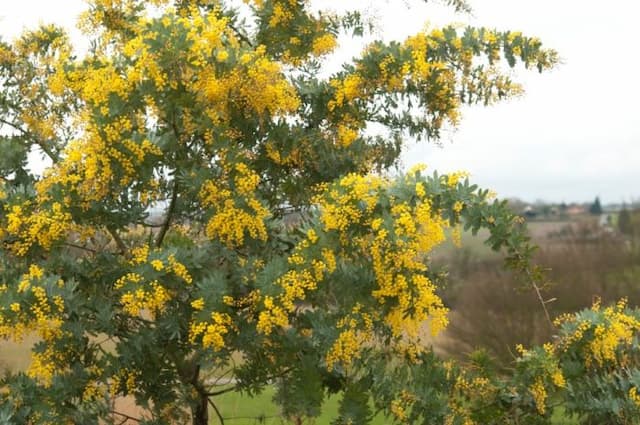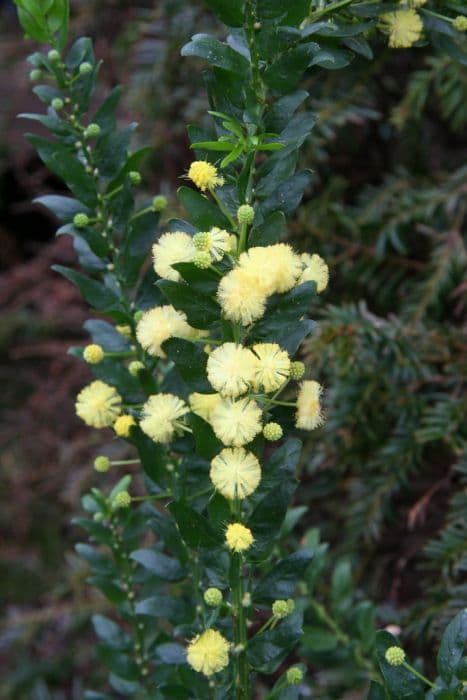Common vetch Vicia sativa

ABOUT
Vicia sativa, commonly known as common vetch, is a climbing plant with a delicate and slender appearance. It traditionally has a coiling growth habit, which means it spirals around other plants or structures for support. The stems are often branching and bear compound leaves that are made up of multiple small, oval to lance-shaped leaflets. These leaflets are arranged in pairs along a central stalk, and at the end of this stalk, there is often a branched tendril that the plant uses to grip onto supports. The common vetch is adorned with flowers that are typically a vibrant violet or purple color, though they may sometimes have shades of red or even be white. These blooms are small and shaped like butterflies, with a typical arrangement that includes a broad 'standard' petal at the top, two 'wing' petals at the sides, and a keel formed by two fused petals at the bottom, which encase the reproductive parts of the flower. Following flowering, the common vetch produces pods that can vary in color but are often seen as a pale green, maturing to a brown. The pods appear elongated and somewhat flattened, containing multiple seeds within them which can be used for propagation or as a source of feed for animals. The plants themselves are part of a group that is known for enriching the soil with essential nutrients, as their roots form a mutual relationship with bacteria that enable the fixation of nitrogen from the air into the soil.
About this plant
 Names
NamesFamily
Fabaceae.
Synonyms
Common Vetch, Tare, Garden Vetch, Spring Vetch, Vetch.
Common names
Vicia angustifolia, Vicia bobartii, Vicia coerulea, Vicia cordata, Vicia cornigera, Vicia cosentini, Vicia esquirolii, Vicia glabra, Vicia grandiflora, Vicia heterophylla, Vicia macrocarpa, Vicia moravica, Vicia nemoralis, Vicia peregrina, Vicia pilosa, Vicia segetalis, Vicia sicula, Vicia sinensis, Vicia splendens, Vicia variegata, Ervum sativum.
 Toxicity
ToxicityTo humans
Vicia sativa, commonly known as common vetch, is a plant that is generally considered to have a low level of toxicity to humans. However, consumption of large quantities of the seeds may potentially cause mild stomach upset due to the presence of compounds such as alkaloids and cyanogenic glycosides. Symptoms of poisoning by common vetch could include nausea, vomiting, abdominal pain, and diarrhea. Although severe poisoning is rare, consumption of the seeds, particularly uncooked or in large amounts, should be avoided.
To pets
Vicia sativa, known as common vetch, can be toxic to pets if consumed in large quantities. The seeds of the plant contain compounds such as alkaloids and cyanogenic glycosides that can be harmful. Symptoms of common vetch poisoning in pets may include vomiting, diarrhea, abdominal pain, and in severe cases, central nervous system depression or breathing difficulties. It's particularly important to monitor grazing animals, such as horses and cattle, for access to large amounts of common vetch, as they can be more susceptible to the toxic effects due to their grazing habits.
 Characteristics
CharacteristicsLife cycle
Annuals
Foliage type
Deciduous
Color of leaves
Green
Flower color
Purple
Height
2-3 feet (0.6-0.9 meters)
Spread
1-2 feet (0.3-0.6 meters)
Plant type
Herb
Hardiness zones
5
Native area
Mediterranean
Benefits
 General Benefits
General Benefits- Nitrogen Fixation: Vicia sativa, commonly known as common vetch, improves soil fertility by fixing atmospheric nitrogen through its relationship with symbiotic bacteria.
- Green Manure: It is often used as a cover crop to enrich the soil, reduce erosion, and suppress weeds, as it can be plowed into the soil to act as green manure.
- Forage Value: Common vetch is used as fodder for livestock due to its high protein content and palatability, which can help in the production of milk and meat.
- Wildlife Habitat: It provides a natural habitat and food source for a variety of wildlife species, including bees and other pollinators, which are attracted to its flowers.
- Erosion Control: Its dense growth helps to stabilize soil and prevent erosion, particularly in areas prone to wind and water damage.
- Soil Structure Improvement: The plant's deep root system helps to improve soil structure and drainage, which is beneficial for subsequent crops.
- Bee Forage: The flowers are a good source of nectar, making them attractive to bees and beneficial insects, thereby supporting pollination of surrounding crops and plants.
- Companion Planting: Common vetch can be used in companion planting strategies to enhance the growth and health of neighboring crops.
 Medical Properties
Medical Properties- Diuretic: Vicia sativa, commonly known as common vetch, has been used for its diuretic properties.
- Demulcent: The seeds of common vetch are known to have a soothing effect on inflamed tissues within the body.
- Laxative: It is believed to help in relieving constipation.
- Tonic: The plant has been traditionally used to strengthen and invigorate the body.
 Air-purifying Qualities
Air-purifying QualitiesThis plant is not specifically known for air purifying qualities.
 Other Uses
Other Uses- Vicia sativa, commonly known as common vetch, can be used as a cover crop or green manure to improve soil fertility by fixing nitrogen and adding organic matter to the soil.
- It is sometimes used in crop rotation to break pest and disease cycles, being a non-host for certain pathogens that affect other agricultural plants.
- Common vetch may be grown as fodder for livestock, particularly as a forage for grazing animals like sheep and goats.
- The seeds of common vetch are sometimes used as a component in birdseed mixtures.
- As a component of wildlife habitat restoration, common vetch can provide coverage and food for a variety of species.
- Its blossoms can be beneficial for pollinators, offering nectar for bees and other insects during flowering season.
- Common vetch can be used in intercropping systems, where it is grown alongside other crops to utilize space efficiently and suppress weeds.
- It is employed in erosion control methods to stabilize soil with its extensive root system.
- Vicia sativa can be utilized as an organic mulch when left to decompose on the surface of the soil, helping to retain moisture and suppress weeds.
- Some agriculturists use common vetch as a companion plant, as it can foster a beneficial environment for growing vegetables like tomatoes by enhancing soil quality.
Interesting Facts
 Feng Shui
Feng ShuiThe common vetch is not used in Feng Shui practice.
 Zodiac Sign Compitability
Zodiac Sign CompitabilityThe common vetch is not used in astrology practice.
 Plant Symbolism
Plant Symbolism- Connection and Bonds: Vicia sativa, commonly known as common vetch, has tendrils that allow it to climb and entwine with other plants, symbolizing the idea of connection and the bonds we form with others.
- Nourishment and Sustenance: As a legume, common vetch is often used as fodder for livestock, representing nourishment and the sustenance of life.
- Regeneration and Growth: Common vetch enriches the soil by fixing nitrogen, which is symbolic of regeneration and promoting growth and new beginnings.
- Support and Protection: The way common vetch supports itself using other plants as a structure can symbolize the need for support and protection in a community or relationship.
 Water
WaterCommon vetch, also known as Vicia sativa, should be watered deeply but infrequently to encourage a robust root system. During the growing season, water the plants approximately once a week, providing about 1-2 inches of water each time, or roughly 1.5-2 gallons per square yard, aiming to mimic a moderate rain event. During periods of extended drought or extreme heat, increase watering frequency to twice a week, ensuring the soil remains moist but not waterlogged. Reduce watering in the fall as the plant prepares for dormancy, and if vetch is grown in a region with winter rainfall, additional watering may not be necessary during this period.
 Light
LightCommon vetch prefers full sun to partial shade, thriving in areas that receive at least 6 hours of direct sunlight a day. The best spot for this plant is in a well-exposed garden bed or field, where it receives unfiltered sunlight for the majority of the day. If grown in too much shade, the plant may become leggy and produce fewer flowers.
 Temperature
TemperatureCommon vetch is hardy and adaptable, but it grows best in temperate climates. The ideal temperature range is between 60 and 70 degrees Fahrenheit. It can survive minimum temperatures down to around 15 degrees Fahrenheit and can tolerate summer highs up to about 80 degrees Fahrenheit. Avoid exposure to prolonged temperatures over 85 degrees Fahrenheit, as heat stress could impact growth and seed production.
 Pruning
PruningPruning common vetch is generally not required, as it is an annual plant that completes its life cycle within one season. However, to manage its growth or to prevent self-seeding, you can cut back the plant after it has flowered or as the pods begin to mature. If you choose to prune to control spreading, do it before the seeds begin to disperse, which is typically in late summer or early fall.
 Cleaning
CleaningNot needed
 Soil
SoilCommon Vetch (Vicia sativa) thrives in well-draining soil with plenty of organic matter, like a mix of loam, peat, and perlite. The optimal pH for Common Vetch ranges from 6.0 to 7.0.
 Repotting
RepottingCommon Vetch, or Vicia sativa, typically does not require frequent repotting as it is an annual plant and completes its life cycle within one growing season.
 Humidity & Misting
Humidity & MistingCommon Vetch (Vicia sativa) is adaptable to a wide range of humidity levels and does not require any specific humidity conditions for growth.
 Suitable locations
Suitable locationsIndoor
Not ideal for indoor growth due to size and growth habit.
Outdoor
Plant in full sun, use loamy soil, add compost, water regularly.
Hardiness zone
4-8 USDA.
 Life cycle
Life cycleVicia sativa, commonly known as common vetch, starts its life cycle from a seed, which germinates in the spring when soil temperatures and moisture levels are adequate. Upon germination, it develops a root system and shoots that grow into a climbing or trailing vine with compound leaves. The plant then enters the vegetative stage, during which it grows rapidly and produces tendrils that allow it to climb onto supports or spread along the ground. After reaching maturity, common vetch produces flowers—typically violet or reddish—that are pollinated by insects. Following pollination, the flowers develop into legume pods containing seeds, which mature and are eventually released into the soil as the plant senesces. The life cycle can then begin anew given favorable conditions, as these seeds overwinter and germinate to start the next generation.
 Propogation
PropogationPropogation time
Spring to summer
Propogation: Common vetch, also known as Vicia sativa, is typically propagated using seeds. The most suitable time to sow common vetch seeds is in the fall for areas with mild winters or in early spring in regions where the soil can be worked and the risk of frost has passed. To propagate, one should sow the seeds directly into a well-prepared seedbed at a depth of about 1 to 1.5 inches (approximately 2.5-4 centimeters). The seeds will germinate in soil temperatures between 45-65°F (7-18°C), and it is crucial to keep the soil moist until germination occurs. After germination, common vetch plants need minimal care, growing well in a variety of soil conditions and requiring only moderate watering, especially during dry periods. Optimal seed spacing is around 3 to 6 inches (about 7.5-15 centimeters) apart in rows that are about 18 to 24 inches (approximately 45-60 centimeters) apart to allow room for growth and air circulation.









